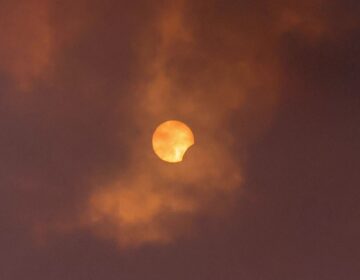What’s in a name?
The International Astronomical Union (IAU) is putting out the call on its 100th anniversary to name an exoplanet and its star.
Listen 4:49
The International Astronomical Union (IAU) is putting out the call on its 100th anniversary to name an exoplanet and its star.
The IAU, the world’s largest professional body for astronomers, serves as the internationally recognized authority for assigning designations to celestial bodies and the surface features on them.
US Exoplanet Naming Contest Opens Tomorrow!
Applicants will have until Oct. 15 at midnight to submit their idea for the name of a star and exoplanet system. The IAU naming committee uses an established system of naming to carefully regulate the naming of astronomical objects in order to provide consistency and avoid duplication and confusion. In this case, the IAU has identified one star and exoplanet system for each country around the world and has allowed each country to establish a national committee to gather ideas from each nation’s population.
The star system chosen for the US is HD 17156 in the constellation Cassiopeia. The US committee will collect candidate names from across the US, ultimately identify the top three most popular names and submit those to the IAU for the final selection. Everything you need to know for how to submit a name is found on a page at The Franklin Institute’s website: www.fi.edu/exo.
This is a great school project, astronomy club project or individual entry project for a chance to have your name idea written in the stars for eternity!
The list of 10 semi-finalists will be made public and available for public voting on October 30. The top three selected by U.S voters will be submitted by November 15 to the IAU100 NameExoworlds Steering Committee for the final choice. The final result will be announced the week of December 16.
Nght Sky Highlights
-The great Square of Pegasus is now well up in the east by 10pm, with the Andromeda galaxy visible in binoculars under dark clear skies.
-Jupiter and Saturn, the Summer Triangle, and the summer Milky Way are also still visible with those bright southern summer constellations Sagittarius and Scorpius flanking the Milky Way.
-The Big Dipper is low in the northwest sky as well three seasons of stars in one night.
WHYY is your source for fact-based, in-depth journalism and information. As a nonprofit organization, we rely on financial support from readers like you. Please give today.




